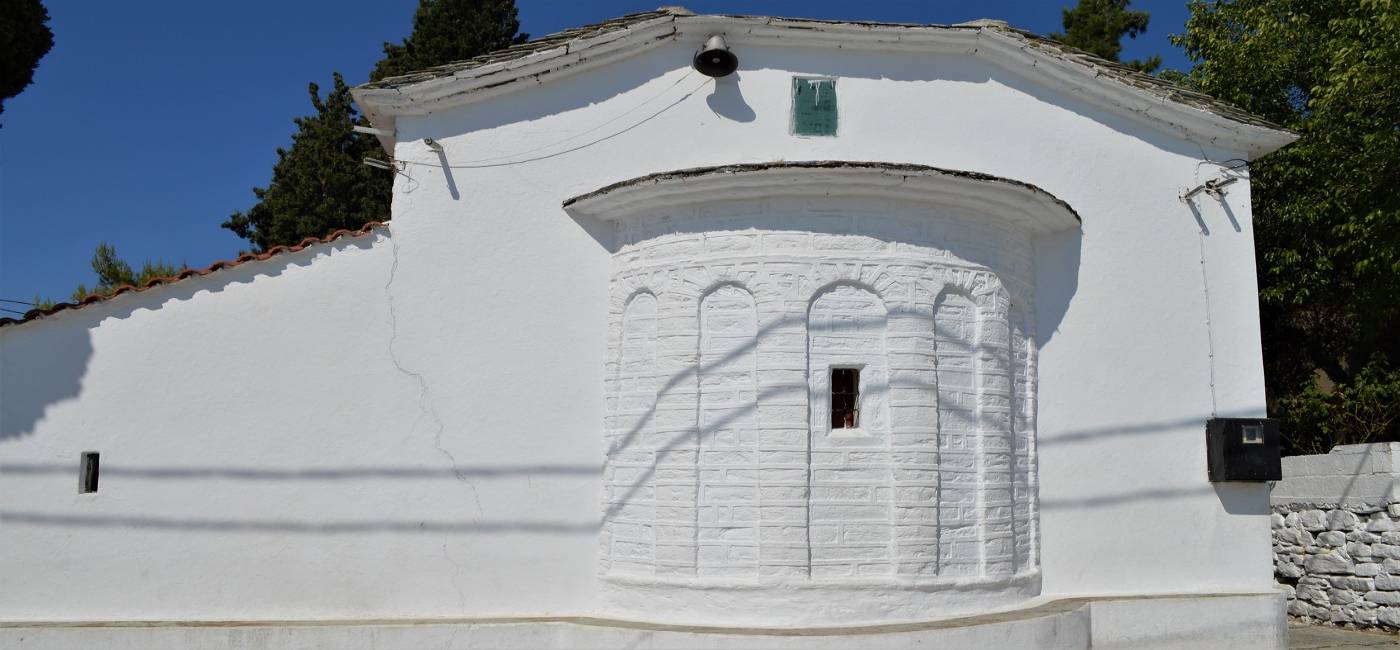Agia Kyriaki - Trikeri
You cannot visit one and not go to the other. Agia Kyriaki and Trikeri go hand in hand and together encapsulate what Pelion is all about: mountain and sea at the same time.
If you love road trips (and you probably do since you are in Pelion!) then one day wake up early and head south to Agia Kyriaki. It’s a long ride if you start from anywhere near Volos, but worth every minute of it. About an hour in, when you start seeing houses with windows painted in blue, you’ll know you reached south Pelion, territory of captains and seafarers.
In the south part of the peninsula, Pelion will give way to Mt. Tisaion, a rocky dry mountain with 644 meters of altitude. The long ridge of Tisaion showcases an uplift attesting to continuous tectonic movement in the area.
When you reach Agia Kiriaki, don’t miss the experience of driving through the village. You will be amazed! The steep and narrow village streets pass right in front of the houses, if not through their front yards. The colorful house front doors will draw your attention.
Enjoy a cup of coffee in the well-kept café-bars or fresh sea food in the village taverns. The museum of Nautical History, the old ship yard and the big wooden fishing boats still coming and going are a testimony to the strong connection of the region to the sea.
At Agia Kiriaki, you cannot feel but being on an island. The whole shore of the village is full of fishermen working on their nets, chatting about their last fishing attempt, drinking coffee and shopping vegetables or bread at the pickup truck ventor that visits Agia Kiriaki daily.
As you leave Agia Kiriaki, the road will take you to Trikeri, but if you don’t pay attention to the sign that says “center,” you will pass the small village without a blink.
Trikeri, a little compact village built in the early 17th century, was originally home to local pirates. Founded by people of the nearby island (also named Trikeri) who were seeking to avoid the raiders of the Aegean sea, the inhabitants of the new village ended up becoming pirates themselves!
Trikeri remained isolated until very recently. The road Volos-Trikeri was constructed in 1984 but this modernization didn’t steal anything from the old splendor of the pirate village.
When you walk on the narrow twisting paths of Trikeri, don’t expect a sea view. As if you entered a real castle or a labyrinth of some sort, you won’t see it, unless you go to the top of the village by the church of Agia Triada or walk into a house courtyard most of which are hidden behind tall built walls.
Unlike the narrow streets, the village square is big stretching generously under the shade of old plane trees. On any summer mid-morning, you’ll find it full with men, both old folks and younger guys that have just returned from their fields, all drink leisurely their coffee and discussing “life.” When we asked them why women were not in the square, the answer was simple: they were all home cooking and preparing lunch, the most important meal of the day for the Greeks.
According to the locals (but not attested by us), some old women of the village still wear to this day the traditional village costumes. They are spectacular works of art and a significant part of the local culture as depending on their style they signify the social status of a women in the community, if she is married or a widow or if the husband is away at sea. They say that it usually takes about an hour for a woman to put on all the different layers (8 in total) of the costume.
Leaving Trikeri, you can’t help but feel that you haven’t seen it all. Secret spots, lost traditions and legends of the old pirates always remain elusive. Until next time.




